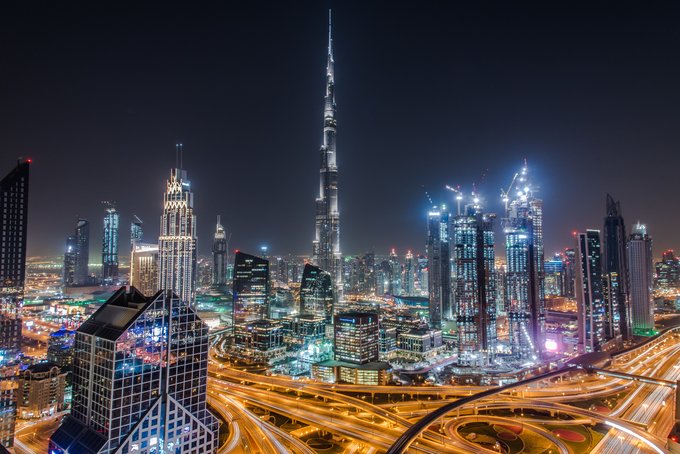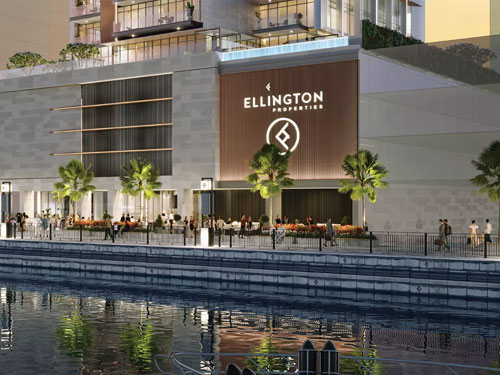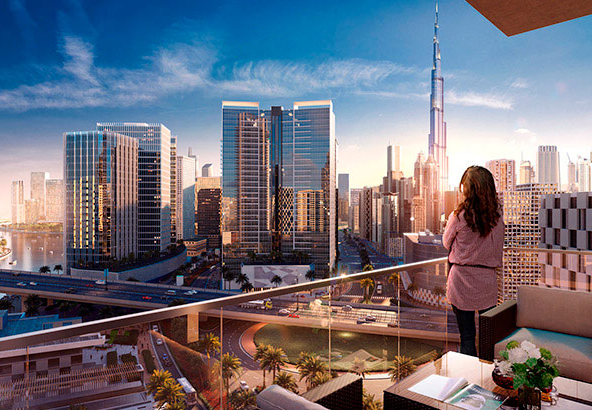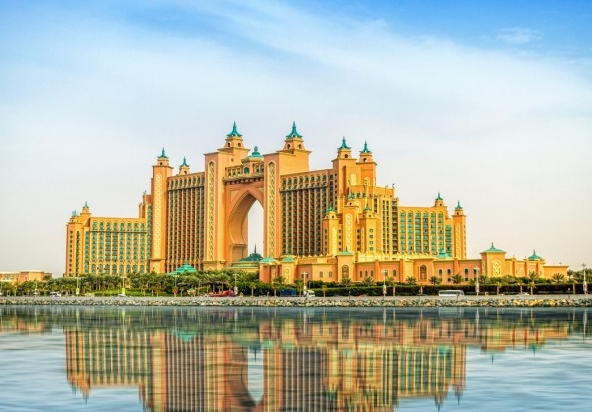The Burj Khalifa, standing at a towering height of 828 meters (2,717 feet), is the tallest building in the world. Located in Dubai, United Arab Emirates, it represents a remarkable feat of modern engineering and architecture. This iconic skyscraper is not only a symbol of Dubai’s rapid development but also an international landmark of architectural innovation.
What you will read in this article:
Design Inspiration
1. Architectural Influence: The Burj Khalifa’s design by Adrian Smith + Gordon Gill Architecture draws heavily from Islamic architecture, particularly the spider lily flower (Hymenocallis). This flower was chosen for its symmetrical beauty and the way its petals radiate outward, which visually reinforces the building’s grandeur.
2. Design Concept: The building’s design features a three-lobed footprint, which echoes the shape of the spider lily’s petals. This design is not only visually striking but also enhances the building’s stability. Each lobe of the base forms a Y-shape, contributing to a robust structural integrity that can withstand the immense forces exerted by wind and seismic activities.
Architectural and Structural Features
1. Base Design: The Burj Khalifa’s base is comprised of a series of interlocking hexagonal patterns that create a star-shaped floor plan. This layout is designed to enhance the building’s stability by distributing loads evenly and providing a solid foundation. The base is anchored on a large mat foundation that is supported by bored piles drilled deep into the ground.
2. Vertical Tapering: As the building ascends, it gradually tapers to reduce wind loads and increase stability. This tapering is achieved through a series of setbacks, where each tier of the building is narrower than the one below it. This design not only contributes to the building’s aesthetic appeal but also helps in managing the aerodynamic forces that act on the structure.
3. Spire: The Burj Khalifa features a slender spire that extends the building’s height and provides additional stability. The spire, made of high-strength steel, helps counteract the forces of wind and contributes to the building’s overall structural integrity. It also houses communications equipment and observation decks.
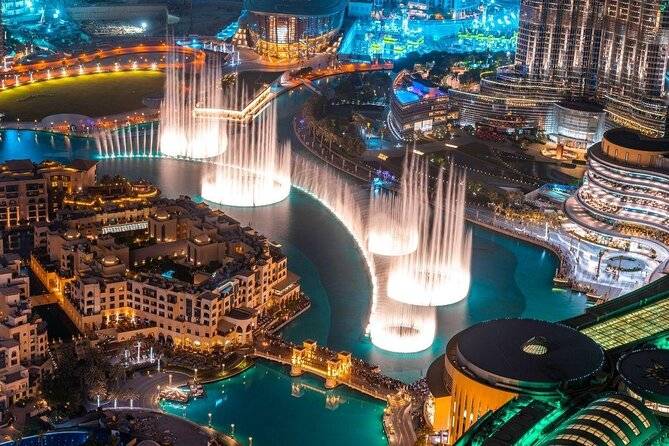
Materials and Facade
1. Reflective Glass Facade: The Burj Khalifa’s exterior is clad in reflective glass, which gives it a sleek and modern appearance. The glass panels are designed to minimize heat absorption, reducing the need for extensive cooling and contributing to energy efficiency. The reflective surface also allows the building to blend with the sky, creating a dynamic visual effect that changes with the time of day and weather conditions.
2. Aluminum and Stainless Steel: The building’s facade is composed of a combination of aluminum and stainless steel. These materials are chosen for their durability, low maintenance requirements, and ability to withstand the harsh climate of Dubai. The aluminum panels are used for their lightweight properties, while the stainless steel provides additional strength and resistance to corrosion.
3. High-Strength Concrete: The core and the floors of the Burj Khalifa are constructed using high-strength concrete, which is designed to support the building’s immense weight and resist the forces of compression and shear. The concrete mix used in the Burj Khalifa includes additives to improve its performance under extreme conditions.
Engineering Techniques
1. Reinforced Concrete Core: At the heart of the Burj Khalifa is a large reinforced concrete core that provides structural support and houses essential services such as elevators and stairwells. The core is designed to resist vertical loads and contribute to the building’s stability.
2. Wing-Shaped Buttresses: Surrounding the central core are three wing-shaped buttresses that form the building’s primary structural support system. These buttresses are arranged in a tripartite pattern, with each wing extending outward and providing lateral stability. They are crucial for resisting the lateral forces generated by wind and seismic activity.
3. Load Distribution Systems: To manage the massive loads and forces acting on the Burj Khalifa, sophisticated load distribution systems are employed. The building utilizes a combination of structural shear walls and column-free spaces to evenly distribute loads and maintain stability. The load distribution system is designed to ensure that the building can withstand the pressures exerted by its own weight and external forces.
4. Wind Engineering: Given the building’s height, wind engineering was a critical consideration in the design process. The Burj Khalifa has been tested in wind tunnels to analyze its aerodynamic performance. The tapering design and the use of setbacks help to reduce wind loads and minimize sway. Additionally, the building’s height and slender profile are optimized to handle wind pressure without causing excessive movement or discomfort for occupants.
5. Elevators and Vertical Transportation: The Burj Khalifa is equipped with a sophisticated vertical transportation system, including high-speed elevators that travel at speeds of up to 10 meters per second. The elevator system is designed to efficiently transport occupants and service the various floors of the building. The elevators are equipped with advanced safety features and are designed to accommodate the high volume of passengers.
Sustainability and Energy Efficiency
1. Energy Efficiency: The Burj Khalifa incorporates several energy-efficient features, including its reflective glass facade, which reduces heat gain and lowers the building’s cooling requirements. The design also includes a high-performance air conditioning system that utilizes advanced technologies to manage energy consumption effectively.
2. Water Conservation: The building employs water-saving technologies and systems, such as low-flow fixtures and water recycling systems, to minimize water usage. The Burj Khalifa also features a dedicated water treatment plant that processes wastewater for reuse in irrigation and other applications.
3. Environmental Impact: While the Burj Khalifa is a symbol of modernity and progress, efforts have been made to mitigate its environmental impact. The building’s design incorporates elements that reduce energy consumption and promote sustainability, aligning with Dubai’s vision for a more environmentally friendly urban development.
The Burj Khalifa is a masterpiece of modern architecture and engineering, blending aesthetic elegance with cutting-edge technology. Its design, inspired by the spider lily flower, combines structural innovation with practical considerations to create a building that is both visually stunning and functionally efficient. The use of advanced materials, engineering techniques, and sustainable practices ensures that the Burj Khalifa remains a marvel of contemporary architecture and a symbol of Dubai’s ambition and progress.
Features and Amenities
The Burj Khalifa houses a variety of facilities, including:
Residential Units in the Burj Khalifa
1. Location and Layout: The residential units in the Burj Khalifa are located from the 19th to the 108th floors. This range spans 90 floors, offering a diverse selection of luxury apartments. The layout of these residences is designed to maximize panoramic views of Dubai and the surrounding areas. The higher the floor, the more expansive the views, which include vistas of the city skyline, the Arabian Gulf, and the desert beyond.
2. Types of Residences: The residential offerings in the Burj Khalifa include a variety of unit types:
- Apartments: These range from one to four bedrooms, with some larger units that offer even more space. The apartments are designed to cater to different lifestyle needs and preferences, providing options for both individuals and families.
- Penthouses: At the very top of the residential section, there are exclusive penthouses that offer unparalleled luxury and privacy. These high-end residences feature expansive floor plans, private terraces, and high ceilings.
3. Interior Design and Finishes: Each residential unit in the Burj Khalifa is designed with a high level of craftsmanship and attention to detail:
- High-End Finishes: The interiors feature luxurious materials such as marble flooring, hardwood accents, and custom-designed cabinetry. High-quality fixtures and fittings are used throughout, including designer lighting and state-of-the-art appliances.
- Modern Aesthetics: The design of the apartments incorporates contemporary styles with clean lines, open spaces, and floor-to-ceiling windows. This design approach ensures that the residences feel spacious and airy while highlighting the spectacular views.
- Customizable Options: For some units, there are options for customization, allowing residents to select finishes and materials that match their personal preferences. This bespoke service ensures that each apartment can be tailored to the owner’s taste.
4. Amenities: The residential units in the Burj Khalifa are equipped with a range of high-end amenities designed to enhance the living experience:
- Kitchen: The kitchens are equipped with top-of-the-line appliances, including ovens, refrigerators, and dishwashers. The cabinetry is custom-designed, often featuring integrated appliances and high-quality materials.
- Bathrooms: The bathrooms are designed as luxurious retreats, with features such as deep soaking tubs, walk-in showers, and double vanities. High-end fixtures and fittings, along with elegant marble or stone finishes, are standard.
- Living Spaces: Open-plan living areas are designed to offer flexibility and comfort. The spaces are often equipped with advanced climate control systems, including air conditioning and heating, to ensure year-round comfort.
- Private Balconies: Many of the residential units include private balconies or terraces, providing additional outdoor space for relaxation and entertaining while offering breathtaking views of Dubai.
5. Building Facilities and Services: Residents of the Burj Khalifa have access to a range of building facilities and services that enhance their lifestyle:
- Concierge Services: A dedicated concierge team is available to assist with various needs, from booking reservations to arranging transportation and handling special requests.
- Fitness and Wellness: The building includes state-of-the-art fitness facilities, such as a fully equipped gym and wellness center. There are also dedicated areas for relaxation, including swimming pools and spa services.
- Security and Privacy: The Burj Khalifa employs advanced security measures to ensure the safety and privacy of its residents. This includes 24-hour surveillance, secure access points, and on-site security personnel.
- Meeting and Event Facilities: For residents who wish to host events or meetings, there are dedicated spaces available within the building. These facilities are designed to accommodate various functions and provide a sophisticated setting for social gatherings.
6. Maintenance and Management: The Burj Khalifa is managed by a team of professional property managers who ensure that all aspects of the building are well-maintained. This includes regular upkeep of common areas, prompt handling of maintenance requests, and overall management of building services.
The residential units in the Burj Khalifa offer a blend of luxury, comfort, and modern design. With their high-end finishes, expansive views, and extensive amenities, these residences provide a unique and prestigious living experience. The combination of high-quality interior design, advanced facilities, and exceptional building management ensures that residents enjoy a superior standard of living in one of the world’s most iconic skyscrapers.
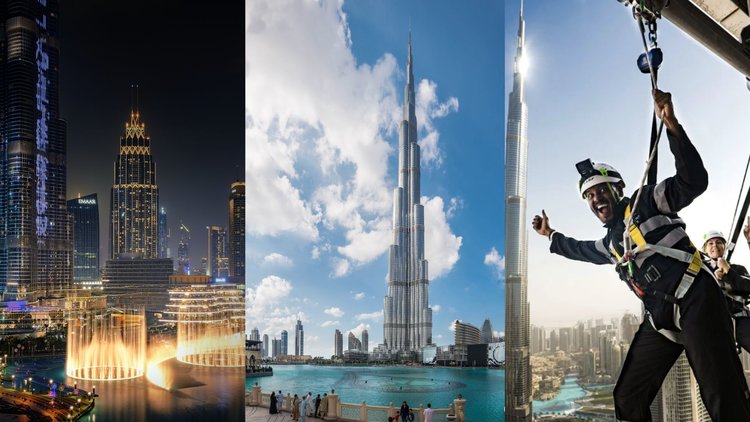
Corporate Suites
1. Location and Design:
- Floors Covered: The corporate suites are located on floors 111 through 154. This range encompasses a substantial portion of the upper floors, providing ample space for a variety of businesses.
- Design: The design of the corporate offices reflects a blend of modern functionality and elegance. The spaces are crafted to offer a professional environment that promotes productivity and creativity. Large floor-to-ceiling windows ensure that occupants enjoy panoramic views of the cityscape and beyond.
2. Facilities and Features:
- High-Speed Connectivity: Each corporate suite is equipped with state-of-the-art technology, including high-speed internet and advanced telecommunications systems. This ensures seamless connectivity for business operations.
- Flexible Layouts: The office spaces are designed with flexibility in mind. Businesses can customize their layouts according to their needs, whether they require open-plan offices, private meeting rooms, or executive suites.
- Meeting and Conference Rooms: The Burj Khalifa provides sophisticated meeting and conference facilities equipped with the latest audiovisual technology. These spaces are designed for high-level corporate meetings, presentations, and events.
- Business Services: Additional services, such as administrative support, catering, and event planning, are available to ensure that business operations run smoothly.
3. Prestige and Location:
- Prestigious Address: Having an office in the Burj Khalifa is a mark of prestige and success. The building’s iconic status and central location make it a highly sought-after business address.
- Networking Opportunities: The presence of other high-profile companies and luxury residences within the Burj Khalifa creates opportunities for networking and collaboration among tenants.
Armani Hotel
1. Location and Design:
- Floors Covered: The Armani Hotel occupies floors 1 through 8 and 38 through 39. This placement integrates the hotel seamlessly into the building, offering guests easy access to luxury amenities and services.
- Design Collaboration: The hotel is a collaboration between the Burj Khalifa and renowned fashion designer Giorgio Armani. The design reflects Armani’s signature style, characterized by elegant simplicity, luxurious materials, and sophisticated details.
2. Accommodations and Amenities:
- Guest Rooms and Suites: The Armani Hotel features a range of luxurious accommodations, including guest rooms, suites, and exclusive Armani Residences. Each room is designed with high-end finishes, bespoke furniture, and state-of-the-art technology.
- Personalized Service: Guests benefit from personalized service, with dedicated staff catering to their needs and preferences. The hotel emphasizes a high level of comfort and privacy.
- Facilities: The hotel includes a variety of facilities, such as a spa, fitness center, and indoor swimming pool. These amenities are designed to provide guests with a comprehensive luxury experience.
3. Dining and Entertainment:
- Restaurants: The Armani Hotel features several dining options, including fine dining restaurants and casual eateries. These venues offer gourmet cuisine prepared by renowned chefs and designed to complement the hotel’s luxurious ambiance.
- Lounges and Bars: The hotel also includes elegant lounges and bars where guests can enjoy sophisticated cocktails and refreshments while taking in stunning views of the city.
Observation Decks
1. Locations and Design:
- Levels 124 and 148: The Burj Khalifa has two primary observation decks: “At The Top” on the 124th floor and a higher deck on the 148th floor. Each deck offers a unique perspective of Dubai and its surroundings.
- Design Features: Both observation decks are designed to maximize visibility and comfort. They feature expansive glass walls that provide unobstructed views, along with interactive displays that offer information about the city and the building’s architecture.
2. Visitor Experience:
- Views: Visitors can enjoy breathtaking views of Dubai’s skyline, the Arabian Gulf, and the desert landscape. The vantage points are particularly striking during sunset and at night when the city lights up.
- Interactive Displays: The observation decks include interactive exhibits that provide insights into the Burj Khalifa’s construction, Dubai’s development, and the surrounding landmarks.
3. Additional Decks:
- 148th Floor Deck: In addition to the 124th-floor deck, the 148th floor features an additional observation area known for its exclusivity and luxury. It provides an even higher vantage point and enhanced visitor experience with premium services.
Dining Options
1. Restaurants and Lounges:
- High-End Restaurants: The Burj Khalifa houses several high-end dining establishments offering diverse culinary experiences. These include gourmet restaurants that serve international and local cuisine, prepared by top chefs.
- Lounges: Elegant lounges offer a relaxed atmosphere where guests can enjoy premium beverages and light snacks while taking in the spectacular views.
2. Dining Experience:
- Ambiance: The restaurants and lounges are designed to provide a luxurious dining experience, with stylish interiors, fine dining décor, and attentive service.
- Menus: Menus feature a wide range of options, from exquisite à la carte dishes to multi-course tasting menus. Emphasis is placed on high-quality ingredients and innovative culinary techniques.
3. Unique Dining Experiences:
- Sky-High Dining: Dining venues in the Burj Khalifa offer a unique experience due to their height and views. Guests can enjoy meals while overlooking the city from a stunning vantage point.
- Exclusive Events: Some dining venues can be reserved for private events, allowing guests to host special occasions in a truly memorable setting.
The Burj Khalifa is a multifunctional marvel, combining luxury residential units, prestigious corporate suites, world-class hotel accommodations, and diverse dining options. Each aspect of the building is designed to offer exceptional experiences and services, making it a landmark of opulence and innovation. The integration of these elements within the world’s tallest building underscores Dubai’s commitment to excellence and its status as a global destination for business, luxury, and leisure.
Economic Impact
The Burj Khalifa has had a significant impact on Dubai’s economy. It has become a major tourist attraction, drawing visitors from around the world who come to see the tallest building and enjoy its luxury amenities. The building has also contributed to the real estate and hospitality sectors, providing a boost to local businesses and creating job opportunities.
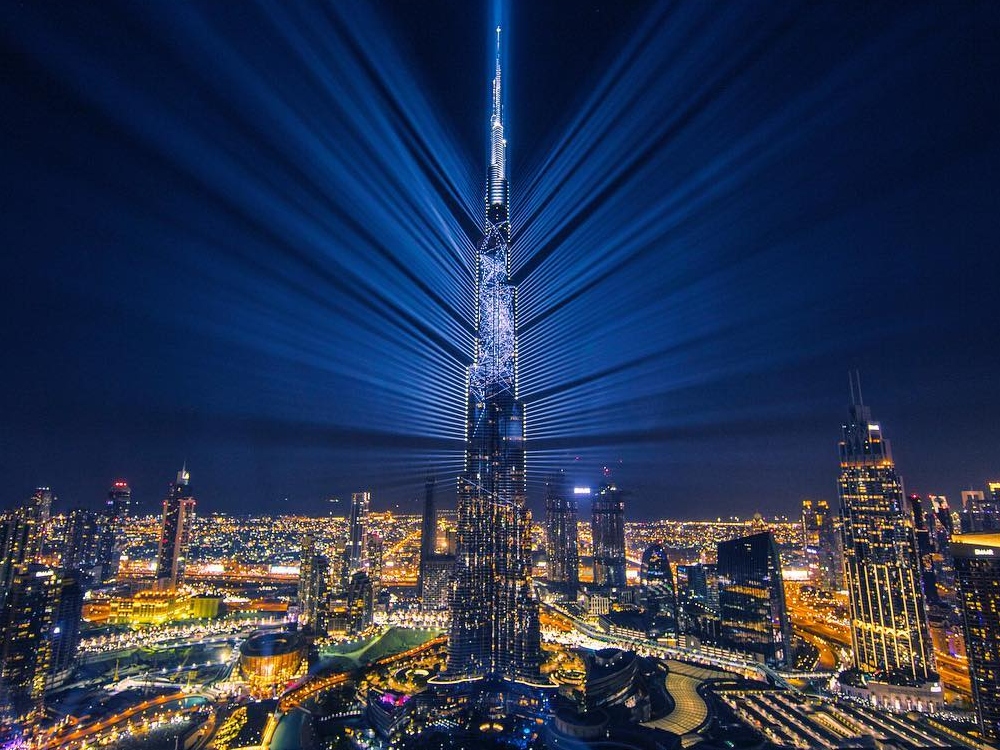
Real Estate Investment in Dubai
Investing in real estate in Dubai offers numerous opportunities, particularly in areas surrounding the Burj Khalifa. Dubai is known for its dynamic real estate market, which attracts investors due to its tax-free environment, high rental yields, and strategic location.
1. Market Overview
Dubai’s real estate market is characterized by a diverse range of properties, including luxury apartments, commercial spaces, and residential villas. The city’s strategic location at the crossroads of Europe, Asia, and Africa makes it an attractive destination for international investors. The real estate sector is supported by a strong regulatory framework and investor-friendly policies.
2. Investment Opportunities
- Residential Properties: High-end residential properties near the Burj Khalifa, such as those in Downtown Dubai, offer attractive investment opportunities. The demand for luxury residences remains strong, driven by both expatriates and high-net-worth individuals seeking premium living environments.
- Commercial Properties: Investing in office spaces and commercial properties in areas like the Dubai International Financial Centre (DIFC) can be lucrative. These areas are known for their business-friendly environments and high demand for office space.
- Hotel and Hospitality Sector: The tourism sector in Dubai continues to grow, making investments in hotel properties a promising venture. The presence of the Burj Khalifa enhances the attractiveness of nearby hotels and hospitality businesses.
3. Factors to Consider
- Location: Proximity to iconic landmarks such as the Burj Khalifa can significantly enhance the value of a property. Areas like Downtown Dubai and the surrounding neighborhoods are highly sought after.
- Market Trends: Understanding current market trends and future developments is crucial for making informed investment decisions. The Dubai real estate market can be influenced by factors such as economic conditions, government policies, and global events.
- Regulations and Legal Framework: Dubai has established a clear regulatory framework for real estate transactions. Investors should be familiar with property ownership laws, residency requirements, and the process for buying and selling property.
- Financing Options: Investors should explore various financing options available in Dubai, including mortgages from local banks and financial institutions. It’s essential to evaluate the terms and conditions to find the most suitable option for your investment.
- Property Management: Effective property management is key to maximizing rental income and maintaining the value of the property. Many investors choose to hire property management companies to handle day-to-day operations.
4. Risks and Challenges
- Market Fluctuations: The real estate market can experience fluctuations due to economic changes, geopolitical events, and other factors. Investors should be prepared for potential market volatility.
- Regulatory Changes: Changes in government regulations and policies can impact the real estate market. Staying informed about regulatory updates is important for compliance and investment strategy.
- Economic Conditions: Global and local economic conditions can affect property values and rental yields. Investors should consider economic forecasts and market conditions when making investment decisions.
The Burj Khalifa stands as a testament to architectural and engineering excellence, symbolizing Dubai’s ambition and progress. Investing in real estate in Dubai, particularly in areas surrounding this iconic structure, offers significant opportunities for growth and returns. However, it is essential for investors to conduct thorough research, understand the market dynamics, and consider various factors before making investment decisions.
Dubai’s real estate market continues to evolve, presenting new opportunities and challenges. By staying informed and leveraging the city’s dynamic environment, investors can make strategic decisions and achieve success in the Dubai real estate sector.
